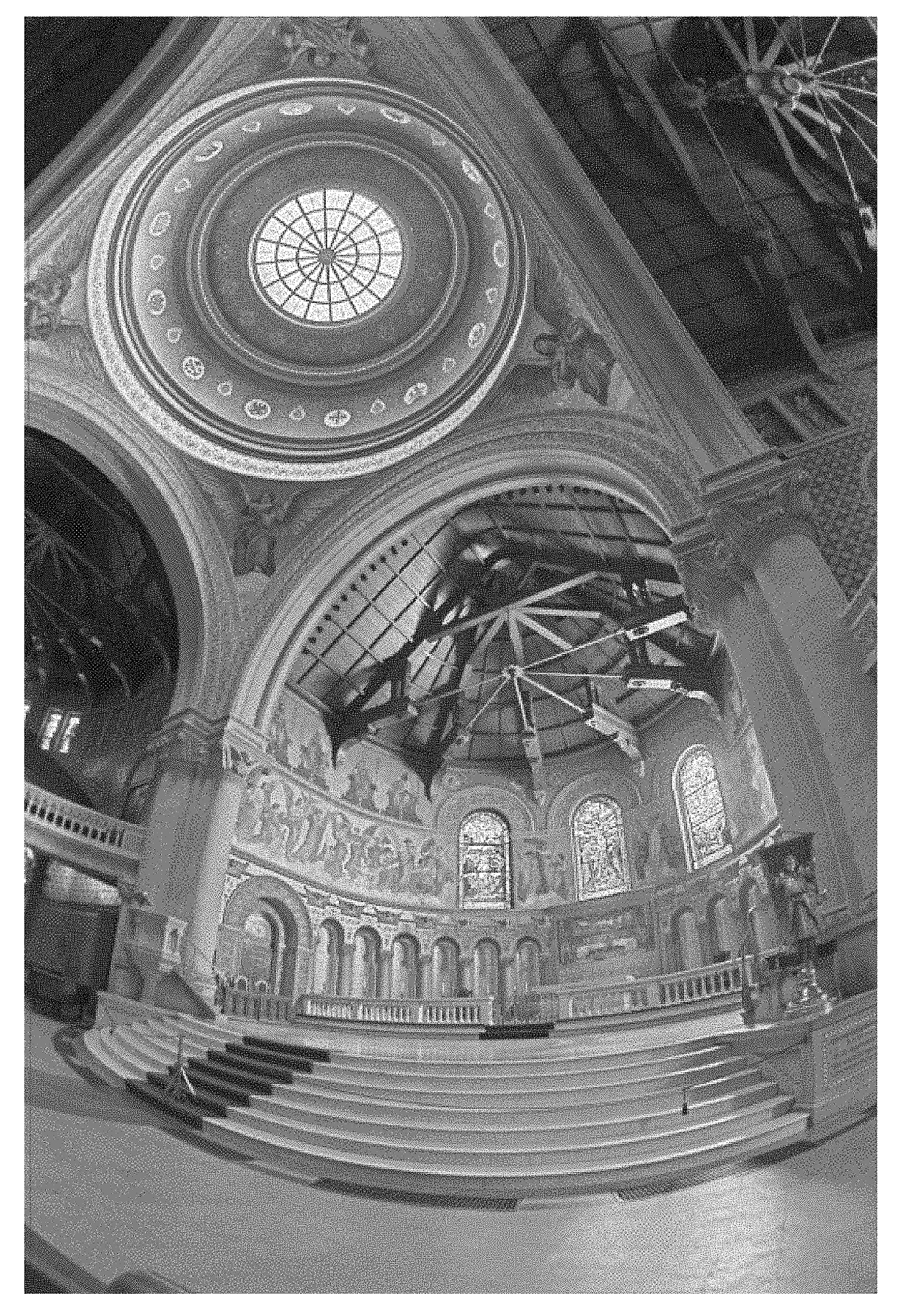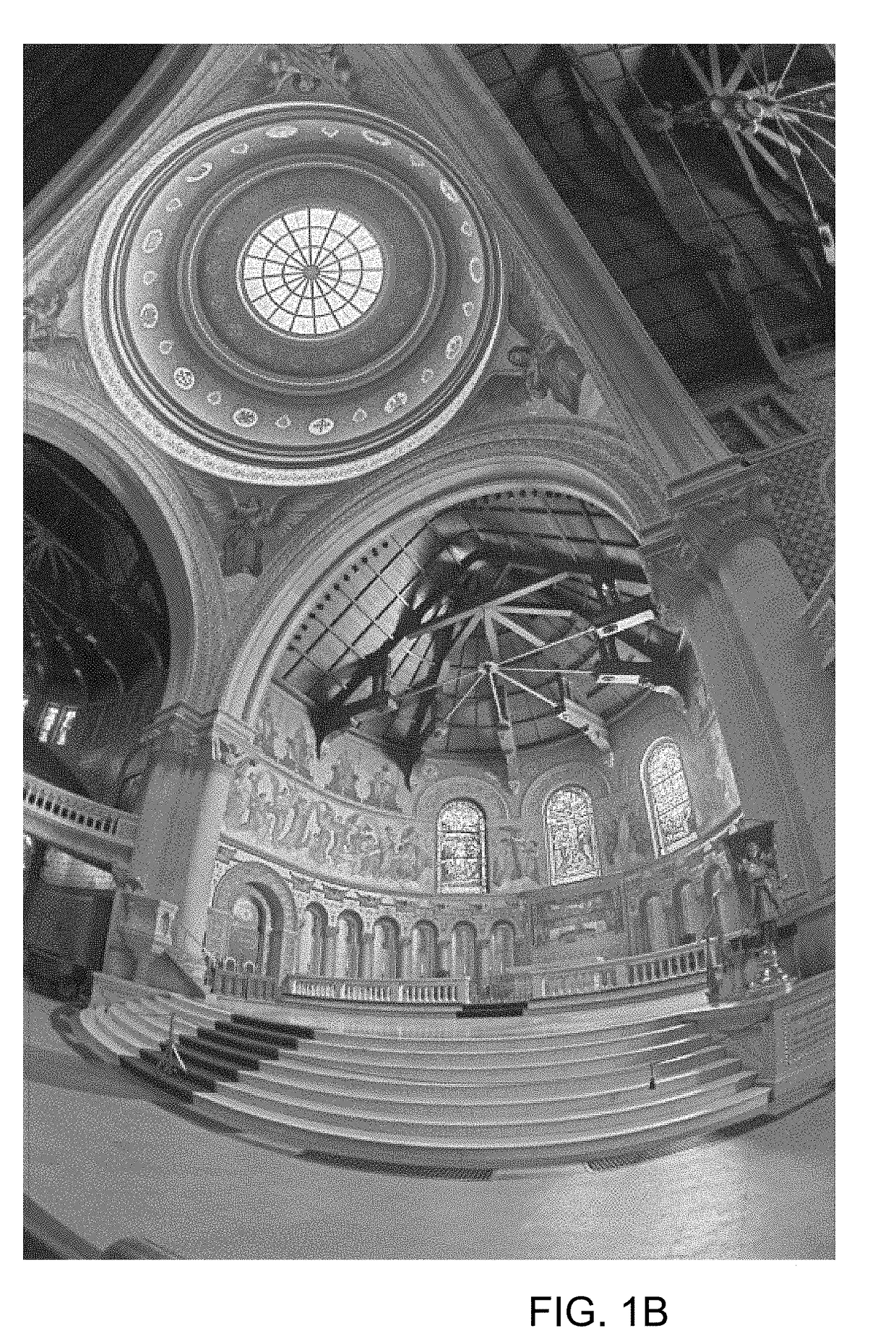Spatially adaptive tone mapping operator
a tone mapping and spatial adaptation technology, applied in image enhancement, image analysis, instruments, etc., can solve the problems of loss of detail, tmo works reasonably well, and no ideal solution exists for processing the output of wdr digital cameras, so as to reduce the global contrast of hdr images, increase contrast, and boost image contrast
- Summary
- Abstract
- Description
- Claims
- Application Information
AI Technical Summary
Benefits of technology
Problems solved by technology
Method used
Image
Examples
example 1
TMCEO Processing of Architectural Image
[0033]The performance of the inventive TMCEO approach can be judged by applying the sample algorithm of Equations (9) and (10) to several HDR images. A common set of test images used to test TMOs is the Debevec Library [6] of HDR images. The test images were all processed with two sets of values for the parameters that control the sample TMCEO of Equations (9) and (10): set A with α=0.36, α=0.03, β=1.0, γ=0.03 (FIG. 1A), and set B with α=0.36, α=0.0, β=1.0, γ=0.0 (FIG. 1B). The parameters of set A are used to enhance the contrast in regions with low illumination levels. In set A, non-zero values of a and y are both needed because a times the ratio of the residual to the local standard deviation is a term in the equation for the reduced dynamic range luminance (Equation 10). The ratio of the residual to the local standard deviation can be positive or negative, so there must be a positive shift to a base level above zero as provided by a positive...
example 2
TMCEO Processing of Landscape Image
[0035]FIGS. 2A-2C show the Vine Sunset HDR image from the Debevec Library processed using this TMO with parameter sets A and B and processed with just clipping above a fixed high luminance value, respectively.
[0036]The Vine Sunset HDR image from the Debevec Library is a high key image (dominated by bright regions). The Reinhard et al. TMO produces little visibility of details in the dark regions of high key images in general. By using the TMCEO described here, with the contrast enhancement turned on, the details in the low light regions of the image are more apparent, as can be seen in FIG. 2A. The contrast enhancement produces some pixels that are mapped to black in FIG. 2A. Such artifacts depend on the noise level in the image—there is a fair amount of noise in the sky region of this image and this noise, contrast enhanced, produces the dark pixels. From a surveillance perspective, FIG. 2A is preferred over the bottom two panels because the dark ...
example 3
TMCEO Processing of Architectural Image
[0037]FIGS. 3A and 3B provide a comparison of image processing using the method described by Ward Larson, G., Rushmeier, H., and Piatko, C. (“A Visibility Matching Tone Reproduction Operator for High Dynamic Range Scenes,” in IEEE Transactions on Visualization and Computer Graphics 3, 4, 1997, pp. 291-306), shown in FIG. 3A and the same image processed using the TMCEO method (FIG. 3B). The image is from Fattal, R., Lischinski, D., and Werman, M. (“Gradient Domain High Dynamic Range Compression,” in Proc. SIGGRAPH Annu. Conf. Computer Graphics, 2002, pp. 249-256.)
PUM
 Login to View More
Login to View More Abstract
Description
Claims
Application Information
 Login to View More
Login to View More - R&D
- Intellectual Property
- Life Sciences
- Materials
- Tech Scout
- Unparalleled Data Quality
- Higher Quality Content
- 60% Fewer Hallucinations
Browse by: Latest US Patents, China's latest patents, Technical Efficacy Thesaurus, Application Domain, Technology Topic, Popular Technical Reports.
© 2025 PatSnap. All rights reserved.Legal|Privacy policy|Modern Slavery Act Transparency Statement|Sitemap|About US| Contact US: help@patsnap.com



